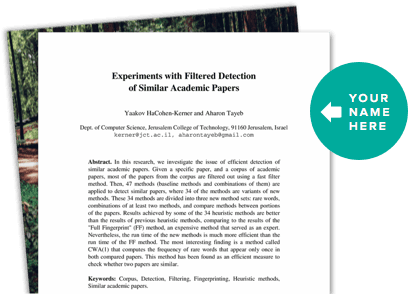About This Project
When touched or shaken, Vicks plants emit a rapid, aromatic defense signal across their branches—much faster than the usual plant communication methods. What mechanism allows such quick scent propagation? By analyzing chemical emissions, electrical surface potentials, and trichome movements, we seek to discover this novel signaling process. Uncovering this could drastically change our understanding of plant communication and defense strategies.
Ask the Scientists
Join The DiscussionWhat is the context of this research?
This project aims to unravel how the Vicks plant (Plectranthus tomentosa) rapidly transmits signals across its tissues, triggering immediate scent release upon a simple leaf touch. Although known plant signaling pathways—like calcium ion waves and electrical impulses—are generally slower (1mm/s), our preliminary experiment evidence suggests the Vicks plant employs a faster, unexplained mechanism. This may be caused by the rupturing of the secretory trichomes or chemical signaling pathways. By combining surface potential measurements, high-resolution microscopy to track trichome reactions, and GCMS to quantify emitted volatiles, this research will clarify the biological basis of rapid, long-distance signal transmission. The results may reveal new fundamental insights into plant communication and defense.
What is the significance of this project?
This project has the potential to uncover a previously unknown, ultra-fast signaling or response mechanism in plants. By doing so, it could expand our understanding of how plants rapidly respond to environmental stress, predators, or other threats. Unlike the slower calcium wave responses studied in model organisms, the Vicks plant may offer a novel blueprint for quick, whole-plant communication. Understanding this mechanism could lead to applications in sustainable agriculture—such as improved pest resistance—and inform plant breeding strategies aimed at enhancing resilience and defense. The knowledge gained may thus inspire innovative approaches to crop management and ecosystem health.
What are the goals of the project?
This project seeks to:
- Identify the underlying mechanisms that enable rapid, whole-plant signal transmission in the Vicks plant, distinguishing them from slower, well-known pathways like calcium waves.
- Quantify and characterize the plant’s immediate responses—both chemical (volatile release) and structural (trichome rupture)—to tactile stimuli.
- Develop and implement precise methodologies (e.g., Gas Chromatography-Mass Spectrometry for volatiles, high-resolution imaging for trichomes, and surface potential measurements) to rigorously test and validate these mechanisms.
- Integrate findings to formulate a new model of rapid long-distance signaling that can guide future agricultural and ecological applications.
Budget
Each budget item directly supports critical steps of the research. Healthy Vicks plants and basic horticultural supplies ensure reliable biological samples. GC-MS analysis confirms volatile compound identities and quantities, while electrodes and imaging tools measure surface potentials and trichome responses. Specialized reagents enable precise Ca²⁺ detection. Lastly, software aids in interpreting complex data, ensuring rigorous and meaningful conclusions about rapid signal transmission in plants.
Endorsed by
 Project Timeline
Project Timeline
Each project phase builds on previous findings, with regular updates and detailed lab reports uploaded to maintain transparency and engagement. At each milestone, there will be corresponding lab reports.
If trichomes emit the scent, additional experiments will explore these mechanisms. Otherwise, the focus will shift to investigating the molecular pathways that produce and initiate the scent in the plant.
Jan 19, 2025
Running preliminary GCMS analyses on emitted volatiles to verify the presence and timing of rapid scent release.
Jan 26, 2025
Measure the refractory period of P. tomentosa. This tests the hypothesis of whether the smell is emitted from trichomes.
Jan 30, 2025
Project Launched
Jan 31, 2025
We will capture high-resolution microscope images of the trichomes before and after shaking P. tomentosa to test whether they rupture.
Feb 07, 2025
We will record surface potential changes using modified EPG to show that ion changes are involved in this process. EPG needs to be connected to a voltage clamp.
Meet the Team
Affiliates
Alan Wu
I am passionate about researching the rapid signal transduction pathway in Plectranthus tormentosa, driven by pure curiosity. This plant's remarkably fast and observable volatile response is a rare phenomenon among plants, sparking my interest. I believe Plectranthus tormentosa has the potential to become a new model organism for studying plant "nervous systems" and understanding how plants can react swiftly to external stimuli.
Miguel Pineros
Research Plant Physiologist at the USDA-ARS Robert W. Holley Center for Agriculture & Health.
Project Backers
- 0Backers
- 0%Funded
- $0Total Donations
- $0Average Donation



